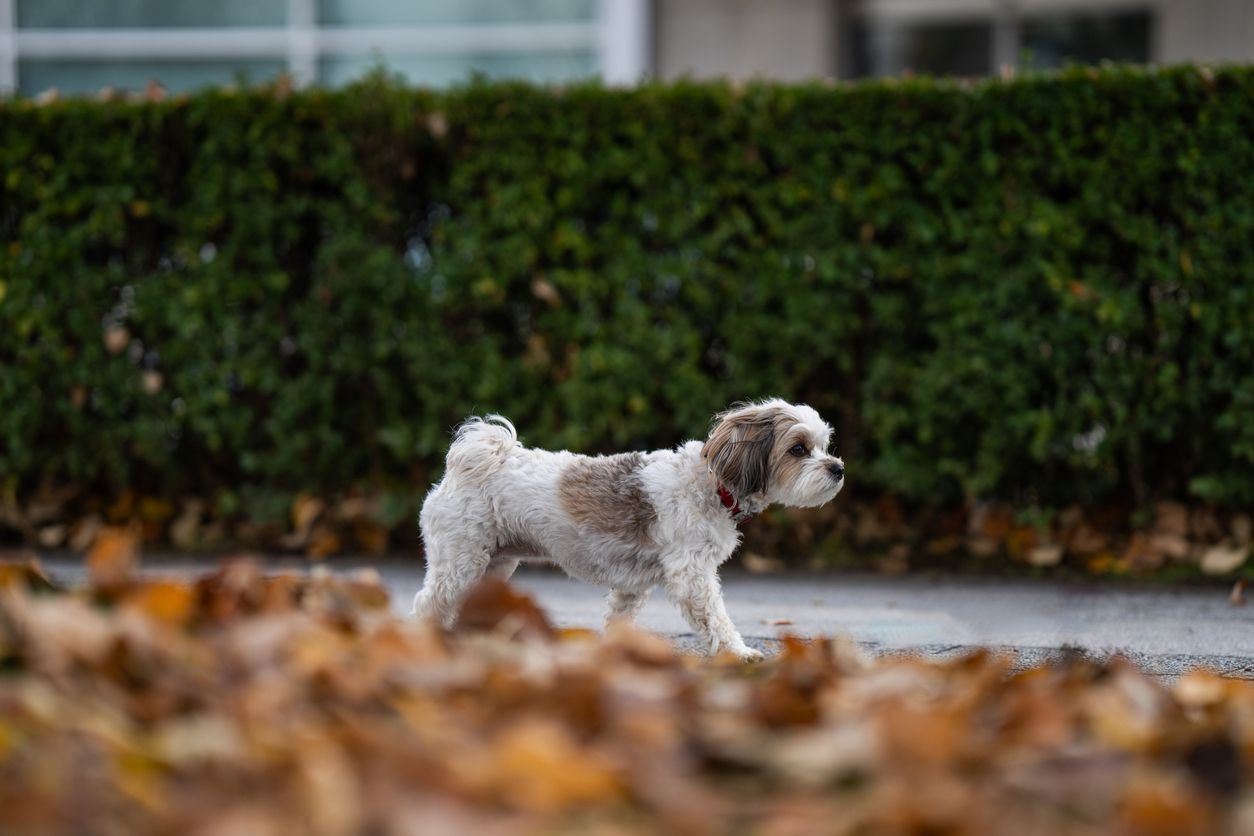What to do if your dog has ringworm

Disclaimer: This article and its content and related references does not constitute veterinary advice and should not be considered a substitute for veterinary care.
Ringworm is a common fungal skin infection in mammals, including pet dogs. A veterinary visit for diagnosis and proper treatment is usually necessary to clear the infection and protect other members of the household. Read on to learn:
- What is ringworm?
- How is ringworm in dogs treated?
- What does ringworm look like in dogs?
- Can I prevent my dog from catching a ringworm infection?
- Ringworm is highly contagious and easily spreads between pets and from animals to humans*. It’s important for pet owners to treat ringworm in their dogs according to their veterinarian’s advice to prevent its spread and relieve symptoms.
What is a ringworm infection?
Unlike the name suggests, ringworm is a fungal infection on the skin rather than a parasitic or worm infestation. Ringworm is a common and highly contagious skin condition in dogs and other animals that can spread to their owners, so effective treatment is needed to prevent its spread.
What is the treatment for ringworm in dogs?
While it’s possible for ringworm to go away on its own, that’s rare. Ringworm is usually difficult to treat because it requires medication and isolation of the infected animal for a minimum of six weeks until the fungus is eliminated. Ringworm treatment involves:
- Oral medications and topical treatments
- Medicated shampoos
- Frequently disinfecting the home
- Isolating the affected dog
If a dog tests positive for ringworm, other animals and people in the home may also need to be tested and treated. Some dogs on antifungal medications for long periods of time may need regular blood work to ensure they are tolerating the medication. One difficulty in successfully treating ringworm is keeping the infected dog isolated from other members of the family, often for multiple months, until the infection is gone.
How do veterinarians diagnose canine ringworm?
Diagnosis of ringworm in dogs involves a physical exam and diagnostic testing, including looking at skin scrapings under a microscope, fungal cultures, and skin biopsy. In some cases, ringworm infections can glow under a black light (aka a wood’s lamp) in a dark room, aiding in diagnosis.
Can I treat my dog’s ringworm infection from home?
It’s best to first get an accurate diagnosis of ringworm to prevent misdiagnosis and ineffective treatment. The symptoms of ringworm are similar to many other canine skin conditions and each condition has its own treatment protocol. Medications, environmental decontamination, bathing, and isolating the affected dog are all performed at home once a diagnosis is made. Always follow a veterinarian’s instructions on ringworm treatment; home remedies haven’t been tested to prove they work and can contain dangerous ingredients for dogs. Tea tree oil, for example, can be lethal to dogs. Ineffective treatment will also increase the risk of the spread of ringworm to other people and animals in the home.
What are the signs of ringworm in dogs?
Ringworm in dogs can be asymptomatic or look like other skin issues. Clinical signs of ringworm include:
- Patches of hair loss
- Red, inflamed skin
- Scabbed or scaly patches of skin
- Dry, flaky skin
- Rash
- Brittle or broken hairs
- Abnormal hair or nail growth
- Itchy skin
Skin lesions from ringworm usually start small, and occur in any shape. They do not have to be circular or ring-shaped. A dog can still have ringworm without having skin lesions or hair loss.

Can ringworm be prevented in dogs?
“People usually only need to think about preventing ringworm if they’ve had a case of ringworm on another pet or a person in the home,” explains Vetster veterinarian Jo Myers. “If another pet has tested positive for ringworm, it’s important to take precautions to prevent other animals and people in the home from catching it.” Some guidelines to prevent the spread of ringworm within the home include:
- Treating the affected pet according to your vet’s instructions
- Isolating the affected pet
- Frequently cleaning the home, pet bedding, grooming tools, and dog toys
- Avoiding direct contact with the affected pet and washing your hands often
Ringworm and other secondary infections are more likely to occur in dogs with broken skin from excessive scratching due to fleas or other allergies. Broad-spectrum parasite prevention and allergy treatment may help prevent ringworm infections by preventing open sores like those that occur with flea allergy dermatitis.
How is ringworm caught and spread?
Ringworm is caused by multiple fungal species that spread through fungal spores in the environment and are carried by infected animals and people. Ringworm usually spreads via direct contact with another infected animal. Infective fungal spores are shed along with pet hair and skin cells, and other pets can be exposed when they share grooming tools, towels, or bedding. Ringworm spores thrive in warm, damp environments such as soil and showers. While any dog can catch ringworm, puppies under a year old, senior dogs, and dogs with compromised immune systems are more likely to catch the infection. Some breeds, such as Yorkshire terriers, are more susceptible to ringworm than other dog breeds.
What should I do if my dog has ringworm symptoms?
Talk to a vet any time you notice an abnormality in your dog’s skin or fur. This allows for an accurate diagnosis of the condition, which helps direct effective treatment. Many other skin infections and conditions have similar symptoms as ringworm and each has its own treatment. Your veterinarian is the best expert to help clear your dog’s infection safely and completely. If a ringworm infection is confirmed, consider getting yourself and other pets and people in the family tested as well. If your dog is experiencing skin problems, you can get advice from an online vet near you with Vetster.
FAQ - What to do if your dog has ringworm
What happens if I touch a dog with ringworm?
Ringworm is highly contagious and typically spread through direct contact with an infected animal. If you have touched a dog with ringworm, the CDC recommends thoroughly washing your hands with soap and warm water. Change and wash your clothes to prevent spreading spores to other people or animals. If symptoms appear, talk to your doctor.
Can ringworm in dogs heal on its own?
Ringworm infections can go away on their own in healthy dogs, but this is rare. Due to the contagious nature of ringworm, it is best to get your dog treated, disinfect your home, and isolate the infected dog to prevent the spread of ringworm to other people and pets in the household.
What is the fastest way to treat ringworm on a dog?
Effective, complete treatment of ringworm takes a long time, and varies depending on the individual dog and how severe the infection is at the time of diagnosis. It usually takes a minimum of six weeks and often requires several months for dogs to fully clear a ringworm infection. For effective treatment, work with a vet and follow their advice. Always give all medications as directed and complete the entire course as prescribed. Do not share doses between animals and do not stop the medication just because symptoms appear to be resolved. “Natural” ringworm treatments or treatments that are not vet-recommended will not help the infection and some can even be dangerous for your dog.
Can people catch ringworm from dogs?
Ringworm is very contagious and easily spreads between animals and from dogs to people. Young children, the elderly, and those who are immunocompromised have an increased risk of contracting ringworm, though anyone can become infected.




